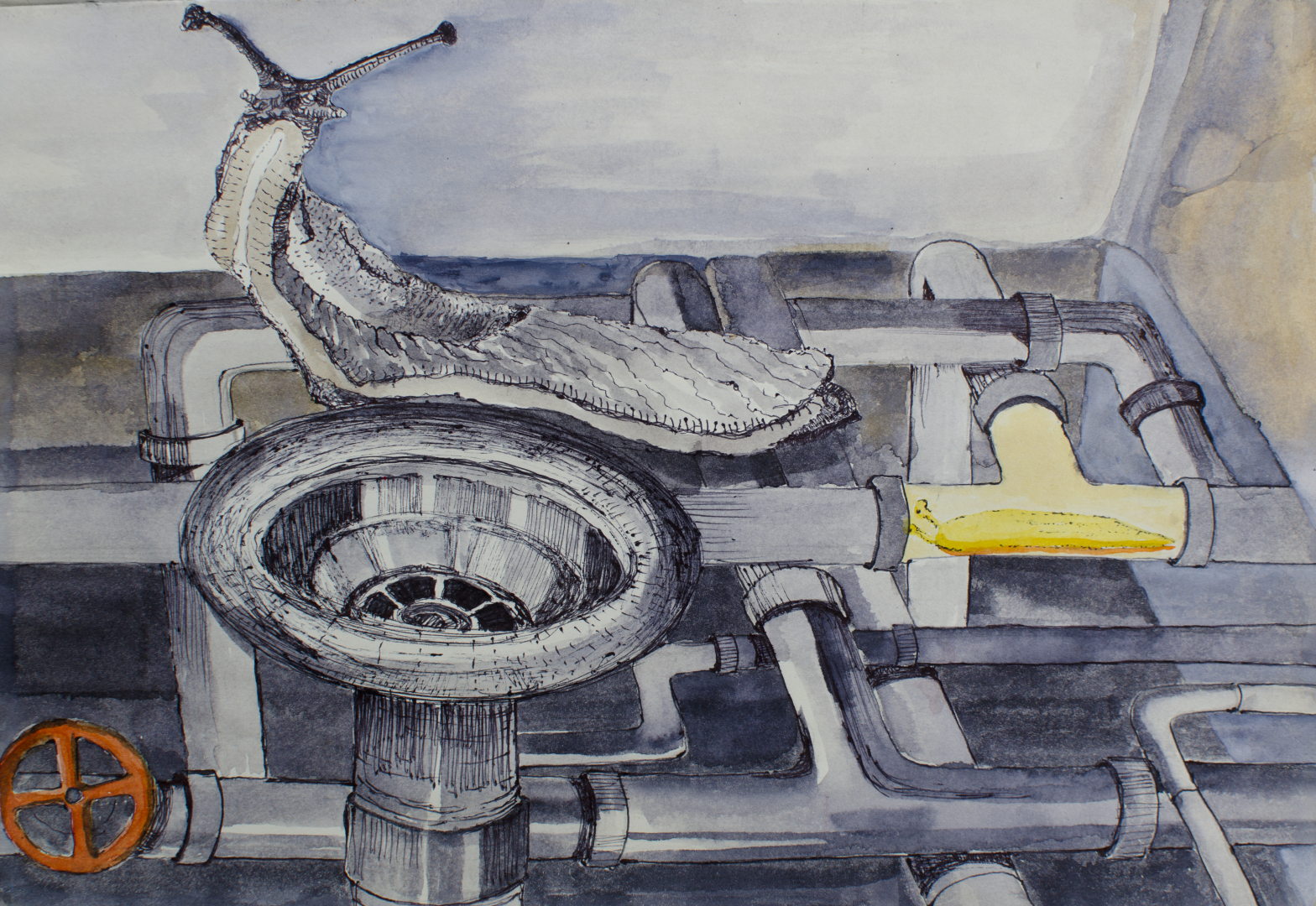The quiet wet evening was rattled by a disgusted cry from the kitchen. I had put down the saucepan into the sink only ten minutes ago. I was about to wash the pan, and put on another two cups of tea when I noticed the blasted critter stuck to the bottom! A slimy little slug!
A graphic image akin to those of the toilet cleaning agent advertisements conjured the idea of a slug-paved plumbing! Repulsed, I flicked out the slug with a cane and swirled the pan twice with soap, scrubbed it clean and rinsed again with boiling water and some lethal common salt. Down the drain I sloshed the hot salt-water, melting all the other ones I imagined to be stuck inside the pipe.
Moments later, a pang of pity struck me. My departed slug had metamorphosed in my mind – it grew glowing wings and a halo each over its weird antenna eyes. In an unkind busy world, it is the slow ones that get kicked and elbowed – or in this case, killed by salty hell. They do make a frequent case of annoyance, inconvenience and sometimes disgust – but these are ideas from the drain-pipes of my conditioning. In any case there is no sympathy for slowness- whether a slug or human being.
I hurried to wash the tea cups. Pity had reddened to guilt. I had recently watched a TED talk on civility in the workplace, which spoke of good allyship leading to good business. ‘Listen to the person when he or she is talking to you, put away your phone when someone addresses you, gift a smile when you cross them in the hallway…’ Daily passive and active aggression and verbal abuse creates slugs out of the worker. It hits their productivity in the stomach and choke-slams their esteem into oblivion. Eventually the ‘slug’ quits. Whoa, I was not going to castigate these poor slugs and snails. Whether an Ambigolimax or an Achinata whicheverata, I was going to advocate. Every snail must be worth his salt, pardon the pun.

While the slugs and snails might be out in the wet mud, in ditches and on walls or in the plumbing, their human advocate is spending her wee hours looking for their purpose in life. Now, there is the Ambigolimax, the ones without the shell, and then the Achatina fulica, the ones who have them and quite a few others like them. The one who suffered my cruelty (wince!) was a Tropical Leatherleaf. After quite some scrolling I found science and media were generally unkind to these legless blobs of flesh and shell as an invasive species. The truth ought to lie somewhere between the sensationalism and the myths, so my search continued.
Their superpowers included an unbeatable sexuality (they are hermaphrodites who can lay up to 1500 eggs at a time and get away with it) and a hearty appetite for anything from plastered walls (to build calcium homes of their own) to food crops painstakingly grown by Homo sapiens. In Kerala, their proliferation is indebted to a certain Homo sapien, a scientist by the name P.N. Radhakrishnan, who introduced the Achatina fulica, or more simply known as the Giant African snail. In 1955, he brought them to Palakkad in Kerala from Singapore as his lab subjects, till things got out of hand. A couple of them were slung into the municipality by some other Homo sapiens. Today they’ve settled into 12 of the 14 districts in Kerala.
But science was not the first to marginalize the snails for who they are. In fact, they were literally and profusely pushed to the margins of the illustrated medieval manuscripts of Europe, leaving even modern experts perplexed. They were pictured in combat with a knight in shining armor, astride a winged dragon or a white steed – supposedly some form of medieval humour where we are supposed to laugh at the knight for trying to fight something as silly and frail as a snail. In other versions, the snail appears more sinister and menacing, pushing its pronged eyes toward the knight. ‘Like a snail that melteth away into slime, they shall be taken away, like a dead-born child, they shall not see the sun’ is the warning of Psalm 58. Maybe the snail was a Biblical allegory for inevitable death and man’s futile attempt to fight it. But the shelled monsters were everywhere, not just the corners of the Bible. This leads to the third assumption that they depicted the Lombards, who were at the time despised as an unruly, monopolizing, sinful lot. In any case, snails made good for satire.
The burgeoning number of this slimy lot in our backyards is not because some witty chap threw them into every corner of our life. It is also one of those environmental imbalances that we propagate. Apparently, due to the excessive light pollution in recent years, there has been a decline of population in the firefly kingdom. Snail larvae are the usual night time snack for fireflies, and with them gone, all 1500 snail eggs are free to hatch and flourish into squirmy slimy progeny – all potential carriers of a deadly nematode capable of causing meningitis in human beings. Talk about karma. For me, this outweighs internet trivia of how Thai women find it beneficial to use snail mucus for cosmetic treatments.
My metamorphosed slug puppied its eyes, sensing an unsavoury verdict. No, that’s it! Out went the haloes and the firefly wings. If these critters could fly, my new found sympathy would be taken with a pinch of salt.






